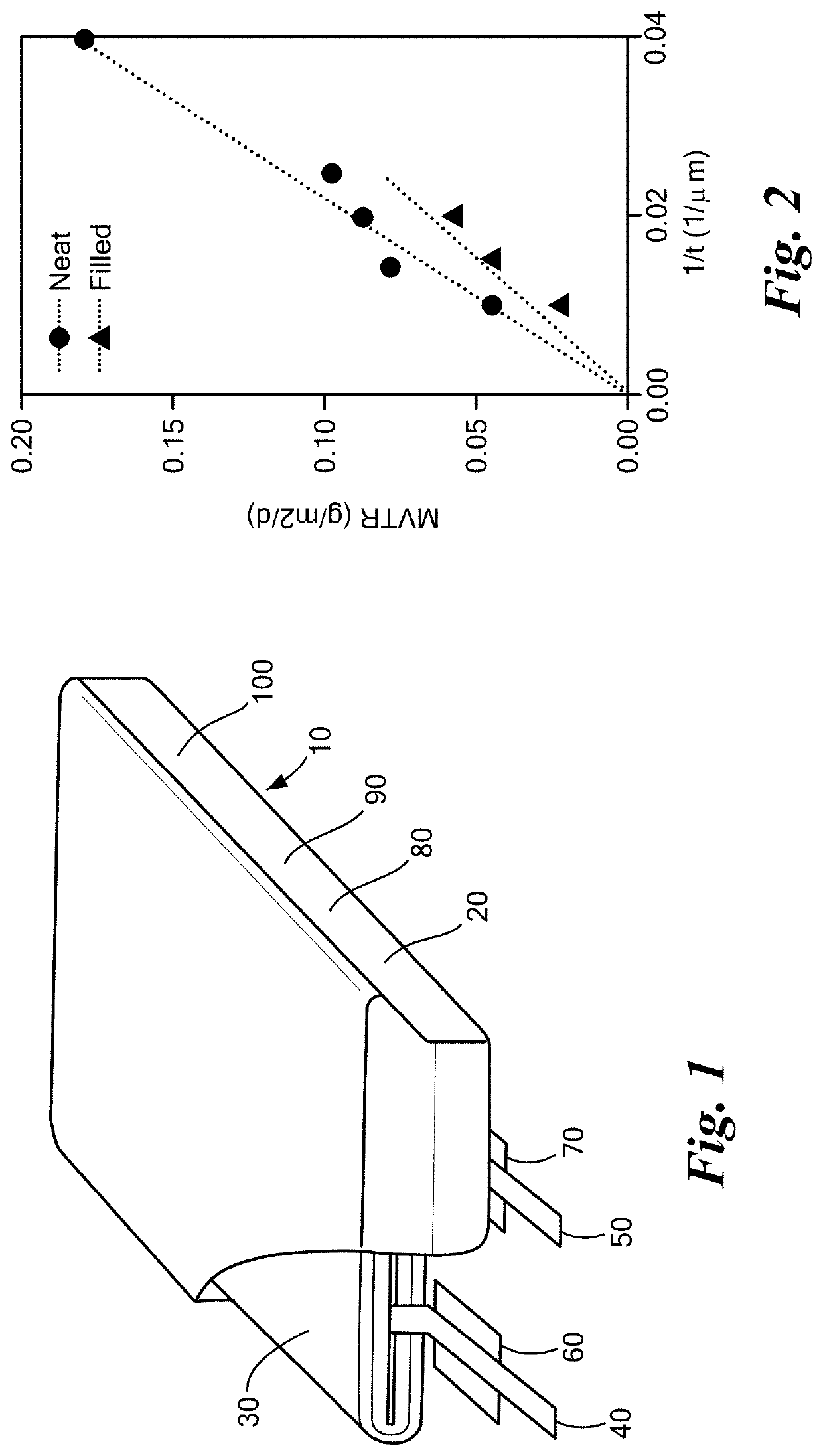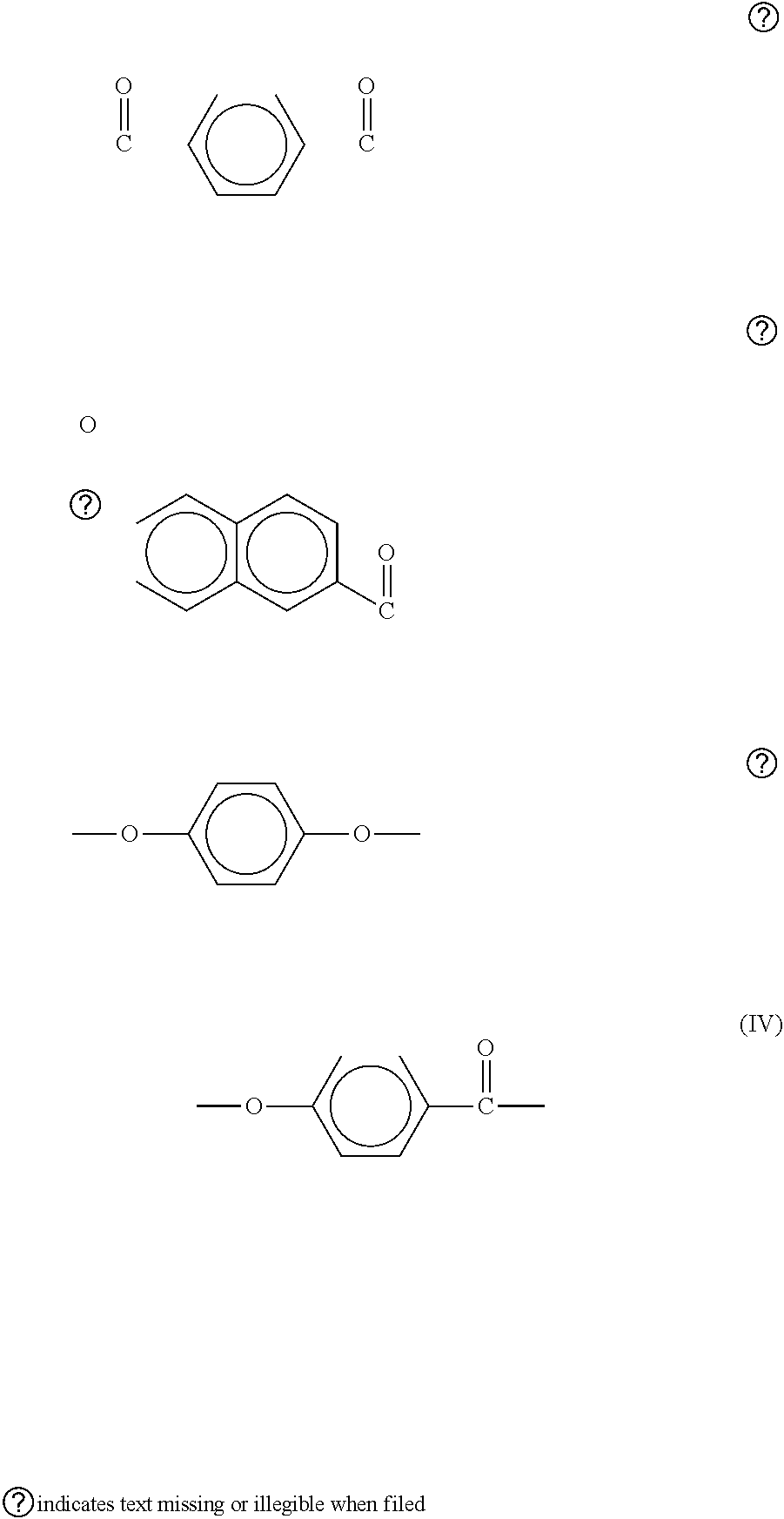Liquid crystal polymer battery enclosure material
a polymer battery and enclosure material technology, applied in the direction of jacket/case materials, cell components, cell component details, etc., can solve the problems of short circuit between the positive and negative tabs of the enclosed battery, severely compromise the barrier properties of the aluminum layer, and the enclosed battery is not easy to be damaged, etc., to prevent the transfer of water, excellent barrier properties, excellent chemical resistance to organic solvents
- Summary
- Abstract
- Description
- Claims
- Application Information
AI Technical Summary
Benefits of technology
Problems solved by technology
Method used
Image
Examples
example 1
[0071]Polymer enclosure strips of various thicknesses were prepared for purposes of the following examples according to the following described methods.
[0072]A compounded resin was prepared with the components listed in Table 1:
TABLE 1ComponentWeight %Vectra A95090 wt. %Imerys Artic Mist Platy Talc10 wt. %
[0073]The components were mixed, and then extruded to various film thicknesses. Pouches were made by heat sealing the manufactured films to render hermetic enclosures. The resulting films were tested according to the following tests and found to have the associated measured characteristics:
TABLE 2PropertyValueUnitTest StandardMoisture%IPC-TM-Absorption650.2.6.2.1FlammabilityV-0RatingUL-94Tensile Strength @150-50MPaISO 527-1 / -25mm / min (X-Y)Elastic Modulus @4.4GPaISO 527-1 / -25mm / min (X-Y)Tensile Elongation 7-19%ISO 527-1 / -2@ 5mm / min (X-Y)Melt Temperature290° C.ISO 11357-1 / -2 / -3(20 C. / min)Coefficient ofppm / ° C.Volume ExpansionThermal ExpansionCalculation(Z)Dissipation FactorIPC-TM-@ ...
example 2
[0075]A Mocon (Minneapolis, Minn.) system was used to measure water (or moisture) vapor transmission rates (WVTR or MVTR respectively) at room temperature through the polymer enclosure. The system was used to perform measurements on neat and filled LCP films. The neat resin films did not include the platy talc filler described above. The results are summarized in FIG. 2. Observations include: MVTR values for LCP in the thickness range of interest to battery pouches, that is, 25-100 microns, at room temperature are between 0.01 and 0.1 g / m2 / d; and the addition of fillers appears to reduce MVTR, and the fillers may provide a more tortuous path for transmission.
example 3
[0076]The Mocon (Minneapolis, Minn.) system (Mocon Aquatran 1) was again used to measure water (or moisture) vapor transmission rates at room temperature through polymer enclosures of various thicknesses. The system was used to perform measurements on both the filled single layer LCP films of Example 1, and commercially available laminated battery pouch materials. The measurements were conducted at 30 C and at 100% relative humidity, and the results are listed in Table 3:
TABLE 3MaterialWVTR (g / m2 / day)Example 1: 75 microns0.0418Example 1: 100 microns0.0320Example 1: 150 microns0.0184Example 1: 200 microns0.0084Comparative Aluminum 0.0202laminate - 200 microns
[0077]These results show that the transmission rates of the polymer enclosure are comparable to commercially available laminate materials.
PUM
| Property | Measurement | Unit |
|---|---|---|
| thickness | aaaaa | aaaaa |
| weight percent | aaaaa | aaaaa |
| dissipation factor | aaaaa | aaaaa |
Abstract
Description
Claims
Application Information
 Login to View More
Login to View More - R&D
- Intellectual Property
- Life Sciences
- Materials
- Tech Scout
- Unparalleled Data Quality
- Higher Quality Content
- 60% Fewer Hallucinations
Browse by: Latest US Patents, China's latest patents, Technical Efficacy Thesaurus, Application Domain, Technology Topic, Popular Technical Reports.
© 2025 PatSnap. All rights reserved.Legal|Privacy policy|Modern Slavery Act Transparency Statement|Sitemap|About US| Contact US: help@patsnap.com



